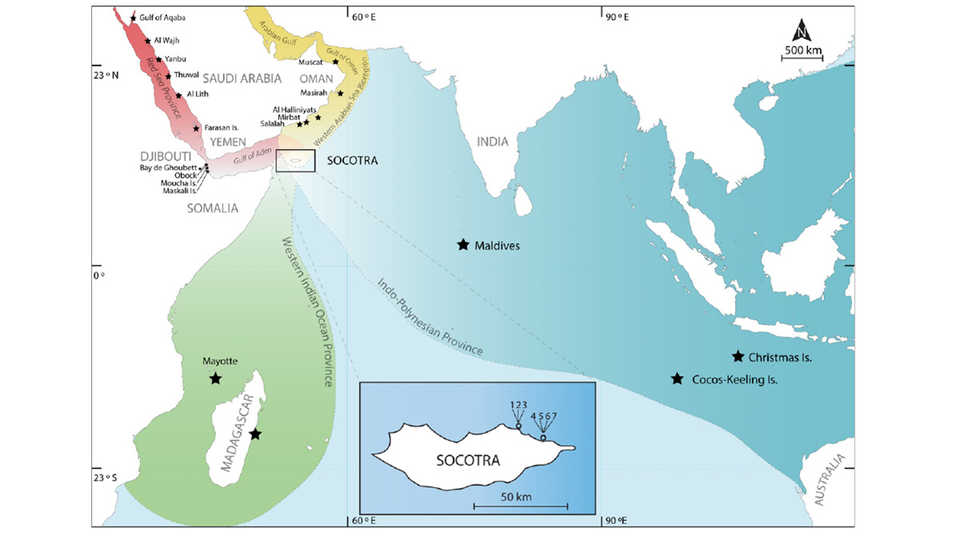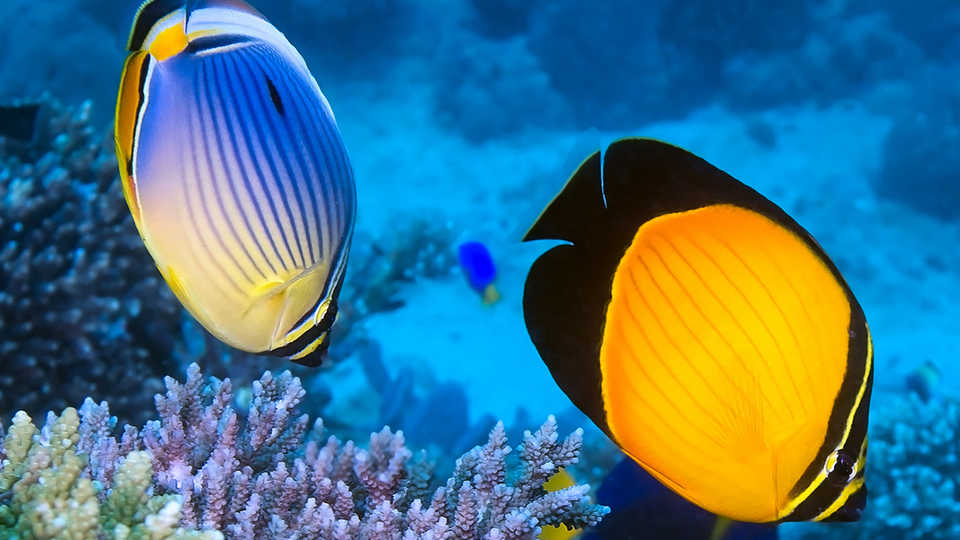Hybrids form when closely related species interbreed. These hybrids may or may not be fertile, and often look like a mix between their parents. For reasons not yet well understood, hybrid fishes are very common, especially in freshwater fishes.
Because closely related species usually have geographic ranges that don’t overlap a lot, opportunities for hybridization are few. However, in some cases, small areas of overlap between species are present and those are known as hybrid zones. When many different hybrids are found in the same hybrid zone, that area becomes known as a hybrid hotspot.
In the oceans, the most diverse and better documented hybridization hotspot is the area between Bali (Indonesia), Christmas and Cocos Keeling islands (Australia). In this area, closely related species of fish from the Indian Ocean to the west and Pacific Ocean to the east meet and hybridize. There are over 20 cases of hybridization documented, mostly between colorful species. In reef fishes, color is very important in documenting hybrids because very often intermediate coloration is what gives us the first indication that the individual is a hybrid.
About a year ago, I joined a team from Curtin University in Australia, King Abdullah University of Science and Technology in Saudi Arabia, and the University of Hawaii to conduct an expedition to the island of Socotra (Yemen), just outside of the Red Sea. Our main objective was to check if fishes from the Red Sea extended their range into Socotra. But our first dive came with a surprise: lots of hybrids! The presence of hybrids there is not completely unexpected; Socotra sits in the intersection of three areas with a lot of unique (endemic) species: the Red Sea, Oman and the western Indian Ocean. A lot of the species that are unique to the Red Sea and Oman extend their range to the nearby Socotra, where their closely related “sister” species from the western Indian Ocean also occur. Because Socotra is at the edge of those regions, the parental species are not very abundant there, so another factor that might help explain the high rate of hybridization is that when the parental species cannot find a suitable match, they mate with whatever is closer.
The hybrids found in Socotra include:
Acanthurus sohal X A. lineatus
Chaetodon collare X C. lunula
Chaetodon gardineri X C. leucopleura
Chaetodon melapterus X C. trifasciatus
Amphiprion bicinctus X A. omanensis
Dascyllus carneus X D. marginatus
Cirrhiticthys calliurus X C. oxycephalus
But what surprised us the most was the fact that we found all of those hybrids in just FIVE DAYS of diving. Our plan was to go back to Socotra this month to spend some more time there and search for more hybrids, but political instability in Yemen caused us to cancel the trip. Hopefully the situation will normalize and we will be able to go back to study this fascinating place in more detail soon.
Reference: DiBattista, J., L.A. Rocha, J.P. Hobbs, H. Song, M. Priest, T. Sinclair-Taylor, B.W. Bowen, and M. Berumen (2015) When biogeographic provinces collide: hybridisation of reef fishes at the crossroads of three marine biogeographic provinces in the Arabian Sea. Journal of Biogeography, online early.
Map and photo by Tane Sinclair-Taylor.

